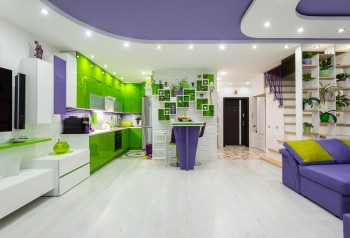Introduction:
Selecting the right paint color can transform the look and feel of your home in Toronto. However, with countless options available, choosing the perfect paint can be overwhelming. That's where expert advice on paint selection comes in. In this blog post, we will provide valuable insights and tips to help Toronto homeowners make informed decisions when it comes to choosing paint colors. From understanding color psychology to considering lighting and architectural elements, we will guide you through the process of selecting the ideal paint for your home.
1. Understanding Color Psychology:
Color has a powerful impact on our emotions and can greatly influence the ambiance of a room. Understanding color psychology can help you create the desired atmosphere in your home. For example, warm tones like red and orange evoke energy and warmth, making them suitable for social spaces like living rooms and dining areas. Cool colors like blue and green promote calmness and relaxation, making them ideal for bedrooms or home offices. By considering the emotions and moods associated with different colors, you can choose paints that align with the purpose and desired ambiance of each room.
2. Harmonizing with Existing Elements:
When selecting paint colors for your home in Toronto, it's essential to consider the existing elements, such as flooring, furniture, and architectural features. Take note of the undertones present in these elements and choose paint colors that harmonize with them. For example, if you have warm-toned wooden floors, consider choosing paint colors with warm undertones to create a cohesive and balanced look. By considering the existing elements in your space, you can create a harmonious and visually pleasing environment.
3. Evaluating Lighting Conditions:
Lighting plays a significant role in how paint colors appear in a room. Natural light and artificial lighting can alter the perception of color. It's crucial to evaluate the lighting conditions in each room before finalizing your paint color choices. Rooms with ample natural light can handle bolder or darker colors, while rooms with limited natural light may benefit from lighter or softer hues to create a sense of brightness. Consider testing paint samples under different lighting conditions to ensure the colors look as desired throughout the day.
4. Testing Paint Samples:
To avoid any surprises, it's always recommended to test paint samples before committing to a color. Purchase small paint samples of your shortlisted colors and apply them to different walls in the room. Observe how the colors look in different lighting conditions and how they interact with the existing elements. Keep in mind that colors can appear differently on walls compared to the paint chips or swatches. Testing paint samples allows you to see how the colors truly appear in your specific space and helps you make a confident decision.
5. Creating Visual Flow and Cohesion:
For a cohesive and visually pleasing look, consider the overall flow and connection between rooms. Choosing a consistent color palette or using complementary colors can create a seamless transition from one room to another. This doesn't mean every room needs to be the same color, but selecting colors that work harmoniously together can enhance the overall aesthetics of your home. Take into account the sightlines and connections between rooms to create a sense of cohesion and balance throughout your space.
6. Seeking Professional Advice:
If you find yourself unsure or overwhelmed, don't hesitate to seek professional advice. Toronto has a wealth of interior designers and paint consultants who can provide valuable insights and expertise. They can help you narrow down your options, offer personalized recommendations, and guide you through the color selection process. Professional advice can bring a fresh perspective and ensure that your paint choices align with your vision and overall design goals.
7. Flexibility and Personal Preference:
While expert advice and guidelines are valuable, ultimately, your personal preference should guide your paint selection. Your home should reflect your individual style and taste. If you are drawn
to a specific color that brings you joy and aligns with your personality, don't be afraid to incorporate it into your design scheme. Paint colors can be easily changed if needed, allowing you to experiment and express your creativity within your space.
Conclusion:
Choosing the perfect paint colors for your Toronto home is an exciting but sometimes challenging process. By understanding color psychology, harmonizing with existing elements, evaluating lighting conditions, testing paint samples, creating visual flow, seeking professional advice, and embracing your personal preferences, you can confidently select paints that enhance the beauty and ambiance of your space. Take your time, consider these valuable tips, and enjoy the journey of transforming your home with the perfect paint colors.










